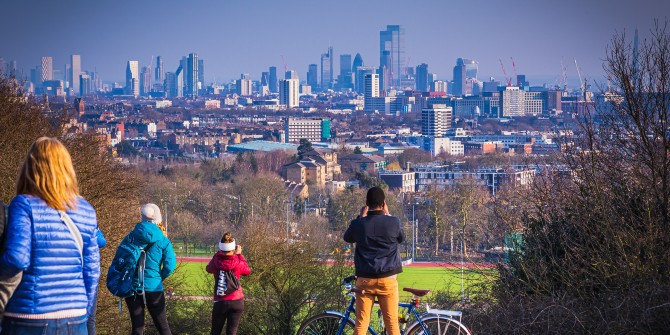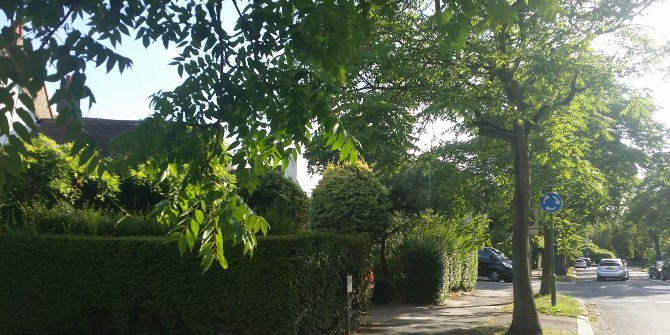People stopped using public transport for fear of catching COVID. Philipp Rode, Catarina Heeckt, Rebecca Flynn, Jonathan Liebenau (LSE) and Oscar Huerta Melchor (OECD) warn that the switch to cars will become permanent unless cities invest in mass transit systems.
Around the world, COVID has disproportionately affected cities. Though over time the pandemic spread more evenly across countries, more than 90% of confirmed cases were initially estimated to come from urban areas. Important functions of cities were put at risk, and with them, socio-economic development and the potential for a safer climate and greener future. Billions of urban dwellers were asked or ordered to stay home; offices shut down, doing business remotely and holding meetings and events virtually; and students were required to switch to online learning. Business districts were left deserted, and hospitality and retail businesses suffered record reductions in customers – all with far-reaching consequences for those businesses and the livelihoods of their employees.
If public confidence is not restored and the loss of revenue is not compensated through other finance, it could lead to a death spiral for public transport
The transport sector faces particular, immediate challenges, as public transport ridership has dropped, and more people are choosing to drive. If this pattern holds, it could increase greenhouse gas emissions, air pollution and congestion and encourage further car-centric urban development. The risk is greater if the frequency and quality of public transport services diminish relative to pre-COVID levels. Mass transit systems are under considerable strain already due to significant revenue losses and increasing operating costs during the pandemic. If public confidence is not restored and the loss of revenue is not compensated through other finance, it could lead to a death spiral for public transport.
China offers a cautionary tale. There, car traffic quickly ramped up to pre-COVID levels, while public transport and long-distance rail use had not yet recovered several months later. A similar picture is beginning to emerge from other cities: in New York, new car registrations rose by 18%; traffic in Perth grew more than 12 times faster than forecast in 2019; and congestion in outer London surpassed pre-pandemic levels by late summer 2020. While walking and cycling increased in many cities, attracting significant investment to support these modes, it remains uncertain whether these advances will be outweighed by a possible increase in car use.
A further challenge has been the proliferation of anti-urban sentiments, fuelled by a backlash against dense urban environments seen as increasing infection risks. Though low-income people living in crowded and substandard conditions were, indeed, particularly vulnerable to the pandemic – especially because most could not work remotely, and thus were also exposed to the virus on the job and while commuting – there is no evidence of urban density inherently increasing COVID risk. Structural economic and social conditions are the most important factors explaining infection variations across urban regions. Still, many people perceived cities as less safe. With the urban advantages of access to culture and economic opportunities reduced by the pandemic or offset by digital connectivity, some were drawn to suburban or rural areas, looking for larger homes, private green spaces and access to nature.

This shift in preferences could be seen when lockdowns were eased after the first wave of infections and footfall was much slower to recover in city centres than in suburbs or non-urban areas. A potential decline of urban cores could severely compromise the push towards more compact, connected and low-carbon development alongside important targets for biodiversity and the preservation of open land and forests. This is not to suggest that there will necessarily be any slowdown in urbanisation rates globally, but rather that the type of urbanisation may change in ways that jeopardise the environment, liveability and equity.
A suburban and rural turn of remotable knowledge workers also risks further exacerbating existing urban inequalities, reducing the resilience of urban societies and their economies. Given the high interdependence between jobs in retail and hospitality and the wider knowledge economy, a reduction in the number of people working in urban offices, especially in inner city business districts, will have knock-on effects for the entire urban labour market and risks considerable job loss. Furthermore, while many higher-income knowledge workers have large enough homes to be able to work remotely from home offices in separate rooms, many lower-income people who would work remotely have been forced to do so in unsuitable spaces, often sharing rooms with other adults or with children attending school remotely.
By far the greatest immediate risk to sustainable and inclusive urban accessibility relates to carbon-intense recovery efforts. National governments under pressure to reenergise the economy can easily backslide into policy-making that undermines both climate and sustainable urban development targets. Though many governments have taken positive steps, on balance, pandemic recovery policies and investments are doing more to undermine climate and sustainable development targets than to advance them. Vivid Economics’ Greenness of Stimulus Index shows that of US$17.2 trillion in emergency response and recovery packages adopted as of June 2021 in the G20 and 10 additional countries, 28% had gone to environmentally sensitive sectors (energy, transport and waste – the most relevant to urban emissions – as well as industry and agriculture). In 15 of the G20 economies and half the other countries, the analysis found, those investments would have a net negative environmental impact, helping entrench fossil fuel dependency and “business as usual” practices.
Emissions have risen again, largely driven by a recovery in road transport activity
The shutdowns and reduced economic activity resulted in a 6% drop in global greenhouse gas emissions in 2020,36 but as activities have normalised, many places have seen a return to pre-pandemic emissions levels. Recent work by the International Energy Agency (IEA) shows that emissions have rebounded most quickly in the countries that invested the least in green economic stimulus measures, including Brazil, China, India and the United States. This increase was largely driven by a recovery in road transport activity. Whether directly related or not, countries in Europe that have invested the most in the green recovery, including France, Germany, Spain and the UK, have been able to keep overall emissions low.
It is clear that without deliberate and immediate action, the world could come out of the pandemic with less accessible and less inclusive cities, set back by behaviour change, urban restructuring and recovery efforts that compromise environmental sustainability.
This post represents the views of the authors and not those of the COVID-19 blog, nor LSE. It is an extract from Rode, P., Heeckt, C., Huerta Melchor, O., Flynn, R., and Liebenau, J. 2021 Better Access to Urban Opportunities: Accessibility Policy for Cities in the 2020s. Coalition for Urban Transitions, London and Washington, DC.





